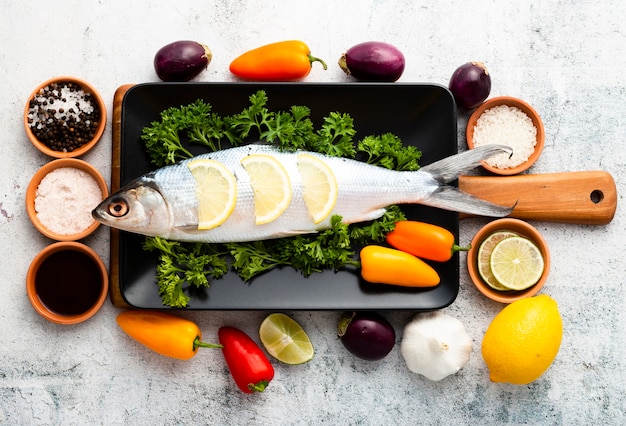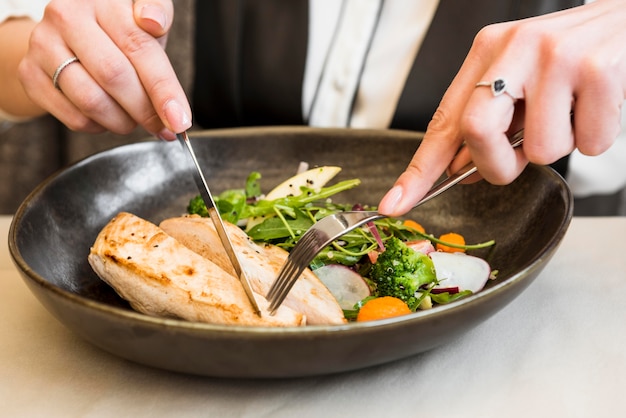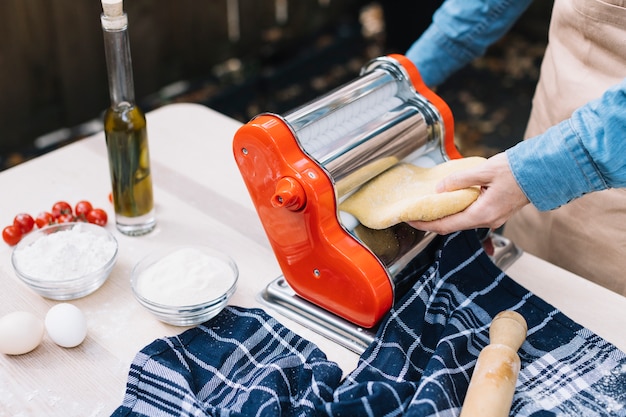There's something undeniably satisfying about a perfectly cooked piece of cod. It's flaky, moist, and boasts a delicate flavour that's a true blank canvas for culinary creativity. But achieving that perfect cook can be a bit of a balancing act. Cod is a delicate fish, easily overcooked and transformed from a culinary delight into a dry, rubbery disappointment. As a seasoned home cook, I've spent countless hours in the kitchen experimenting to find the ideal cod cooking temperature, and I'm happy to share my discoveries with you.
(Part 1) Understanding the Importance of Temperature

Let's face it, cooking cod is a bit of a dance. You need to be mindful of the temperature, adjusting your technique and timing to ensure it reaches the perfect level of doneness. Too low, and you'll end up with a raw, fishy texture that's less than appealing. Too high, and you'll be left with a dry, tough fish that's a real shame. It's all about finding that sweet spot.
The Goldilocks Zone for Cod
The perfect cod cooking temperature is a range, not a precise number. Think of it as the Goldilocks zone for cod: between 140°F (60°C) and 145°F (63°C). This temperature range guarantees that the fish is cooked through, but still remains tender and juicy. It's the magic zone for flaky, delicious cod.
Beyond the Thermometer: Signs of a Perfectly Cooked Cod
Now, not all of us have fancy thermometers that can measure temperatures to the tenth of a degree. Don't fret! There are visual and tactile cues that will help you determine if your cod is cooked to perfection.
Visual Cues:
First, check the colour. As the cod cooks, it loses its translucent, almost glassy appearance and transforms into an opaque, white colour. The flesh should also become firm to the touch. Think of it like a handshake – firm, but not bone-crushing!
The Flake Test:
The classic flake test is a surefire way to assess doneness. Gently prod the thickest part of the fish with a fork. If it flakes easily, it's ready to go. If it offers resistance, or you feel a bit of raw texture, give it a bit more time in the heat.
(Part 2) Cooking Methods and Temperature Considerations

So, we've established the perfect temperature range for cod. Now, let's dive into the different cooking methods and how temperature plays a key role in each.
Baking: A Gentle Approach
Baking cod is a classic method that's as simple as it gets. It's a great option for a hands-off approach to cooking, allowing you to focus on other parts of your meal while the fish cooks in the oven.
350°F (175°C) is the Magic Number:
Preheat your oven to 350°F (175°C) – preheating is essential for even cooking. Bake your cod for 15-20 minutes, depending on the thickness of the fillets. Keep an eye on the fish, using the visual cues and flake test to determine when it's done.
Pan-Frying: Achieving a crispy skin
Pan-frying cod is a fantastic way to create a crispy, golden-brown skin while maintaining a succulent interior. It's a bit more hands-on than baking, but the effort is worth it.
Medium-High Heat is Key:
Heat your pan to medium-high heat, around 350°F (175°C). A cast-iron pan is ideal, but a regular pan with a good, even base will work well. Make sure the pan is properly heated before adding the oil and the fish. You should see the oil shimmering before you add the cod. Avoid overcrowding the pan, as this can cause the fish to steam instead of fry.
3-4 Minutes Per Side:
Cook the cod for 3-4 minutes per side, depending on the thickness. You'll want to keep an eye on the fish as it cooks, looking for those visual cues and using the flake test. A lovely golden crust and that flaky texture are your signs of success.
Grilling: Embrace the Smokey Flavour
Grilling cod is an excellent way to add a smoky flavour and those coveted grill marks. It's a beautiful way to showcase cod's natural flavour.
Medium-High Heat for Perfect Char:
Set your grill to medium-high heat, aiming for around 400°F (200°C). The best way to test the heat is to hold your hand a few inches above the grill grates. If you can only hold it for a couple of seconds, you've got the right temperature.
4-6 Minutes Per Side:
Grill the cod for 4-6 minutes per side, depending on the thickness. The grill marks will indicate when it's time to flip. Again, use your visual cues and the flake test to confirm doneness. Overcooking can lead to a dry, tough fish, so keep an eye on it.
Steaming: A Gentle and Healthy Method
Steaming is a gentle cooking method that preserves the delicate flavour and moisture of cod. It's a healthy choice that doesn't require any additional fats or oils.
Low Heat for a Perfect Steam:
Bring a small amount of water to a simmer in a steamer or a saucepan with a steamer basket. Ensure the water level doesn't touch the cod. Steam the cod for 8-10 minutes, depending on the thickness. Keep a watchful eye and use your trusty flake test to determine when it's cooked through.
Poaching: Indulge in a Luxurious Experience
Poaching cod in a flavorful broth is a luxurious cooking method that elevates the fish to a whole new level of deliciousness. It's a great way to create a rich and flavorful dish.
Poach at a Gentle Simmer:
Bring your broth or liquid to a gentle simmer, gently bubbling but not rolling. Once the broth is simmering, add the cod and cook for 5-8 minutes, depending on the thickness. The cod should be cooked through and just tender.
(Part 3) Cod cooking tips for Success

Now that we've explored the basics of cod cooking temperatures and methods, let's discuss some valuable tips to ensure you achieve perfect results every time.
1. Avoid Overcrowding the Pan or Grill
When pan-frying or grilling cod, make sure to give each piece its own space. Overcrowding can cause the fish to steam instead of cook properly, leading to a soggy texture. If you need to cook in batches, do so to ensure each piece receives the right amount of heat.
2. Don't Flip Too Soon
Be patient and let the cod cook undisturbed for a few minutes before flipping it over. This allows the fish to develop a beautiful, crispy crust. Flipping too early can result in a soggy, unevenly cooked fish.
3. Season Liberally
Don't be shy with the salt and pepper. Cod can handle a good dose of seasoning. Feel free to experiment with other herbs and spices, like paprika, garlic powder, or onion powder, to add depth of flavour.
4. Serve Immediately
Once the cod is cooked, enjoy it right away! Cod can dry out quickly, so it's best to serve it while it's still hot and moist. If you need to hold it for a short time, place it on a plate and cover it loosely with foil.
5. The Importance of Undercooking
This is perhaps the most crucial tip: it's better to undercook cod than overcook it. Cod is delicate, and overcooking it can lead to a dry, tough fish. Trust your instincts and use those visual cues and the flake test to ensure it's cooked to perfection.
(Part 4) Cod Dishes: Recipes and Inspiration
Now that you've mastered the fundamentals of cooking cod, let's explore some delicious recipes to inspire your culinary journey.
Cod with Lemon and Dill: A Classic with a Fresh Twist
This is a timeless classic for a reason. The combination of tangy lemon and fragrant dill complements the delicate flavour of cod beautifully.
Simple Steps to Deliciousness:
Bake or pan-fry the cod, then top it with a generous amount of fresh dill, a squeeze of lemon juice, and a drizzle of olive oil. Serve with a side of creamy mashed potatoes or roasted vegetables.
Cod with Tomato and Basil: A Burst of Mediterranean Flavour
This dish is a celebration of vibrant Mediterranean flavours. The combination of juicy tomatoes, fragrant basil, and garlic creates a sauce that's both flavorful and refreshing.
Instructions for a Delicious Dish:
Bake or pan-fry the cod, then top it with a vibrant tomato sauce made with fresh tomatoes, basil, garlic, and a touch of red pepper flakes. Serve with a side of pasta or rice.
Cod with Chorizo and Peppers: A Hearty and Spicy Delight
This dish offers a spicy and hearty twist on cod. The combination of smoky chorizo, colourful peppers, and onions creates a flavorful and satisfying meal.
Recipe for a Hearty Meal:
Bake or pan-fry the cod, then top it with a mixture of chorizo sausage, red and green peppers, and onions. Serve with a side of crusty bread.
Cod with Coconut Curry: Exotic and Flavorful
This dish is a culinary adventure, combining the delicate flavour of cod with the creamy richness of coconut milk and the aromatic spices of curry. It's a truly exotic and flavorful experience.
Steps for a Delicious Curry:
Bake or pan-fry the cod, then top it with a creamy coconut curry sauce made with coconut milk, curry powder, and ginger. Serve with a side of rice and your favourite vegetables.
(Part 5) Cod Substitutions: Other White Fish
Life happens, and sometimes you can't get your hands on cod. Perhaps it's out of season, or you're in the mood for something new. Don't worry, there are other white fish that can be substituted for cod, and they cook at similar temperatures.
Haddock: A Similar Delight
Haddock is a very similar fish to cod, with a delicate flavour and flaky texture. It cooks at the same temperature as cod, so you can use the same cooking methods and times.
Halibut: A Stronger Flavor
Halibut is a larger fish with a slightly stronger flavour than cod. It cooks a little faster, so you may need to reduce the cooking time slightly.
Monkfish: Dense and Chewy
Monkfish is a dense fish with a slightly chewy texture. It cooks at a similar temperature as cod, but it may need a little longer cooking time, depending on the size of the piece.
Tilapia: A Mild and Versatile Option
Tilapia is a mild-flavoured fish that's a good substitute for cod in many dishes. It cooks quickly and easily.
(Part 6) Cod Storage and Handling: Ensuring Freshness
To make sure your cod stays fresh and delicious, it's important to store and handle it properly.
Refrigerator Storage:
Cod is best stored in the refrigerator for up to 2 days. Store it in the coldest part of the refrigerator, wrapped tightly in plastic wrap or in an airtight container. Never leave cod out at room temperature for more than two hours.
Freezing:
You can freeze cod for up to 3 months. To freeze cod, wrap it tightly in plastic wrap, then place it in a freezer-safe bag. Remove as much air as possible before sealing the bag.
Thawing:
To thaw frozen cod, place it in the refrigerator overnight. Never thaw cod at room temperature. You can also thaw frozen cod in a bowl of cold water. Make sure the cod is completely submerged in the water and change the water every 30 minutes.
(Part 7) Why Cod Stands Out: Unique Texture and Flavor
You might be thinking, "What's the big deal about cod anyway?" Well, it's not just any fish. Cod has a unique combination of characteristics that make it stand out.
Delicate Flavor and Flaky Texture:
Cod is prized for its delicate, slightly sweet flavour and wonderfully flaky texture. It's a real blank canvas, allowing you to experiment with various flavours and ingredients without overpowering the fish itself.
Versatility: A Culinary Chameleon
The versatility of cod is a major bonus. It's equally delicious baked, pan-fried, grilled, steamed, poached, or even used in fish cakes, pies, or curries. You can really get creative with cod, adapting it to suit your taste and dietary preferences.
(Part 8) Environmental Considerations: sustainable cod Choices
It's important to be mindful of the environmental impact of our food choices. Cod stocks have faced challenges, but we can play a role in promoting sustainable fishing practices.
Look for Certifications:
When you're buying cod, look for certifications from organizations such as the Marine Stewardship Council (MSC). These certifications indicate that the cod has been caught in a sustainable way, minimizing the impact on the fish population.
Choose Smaller Cod:
Smaller cod are typically younger and have had less time to reproduce. Choosing smaller cod can help to reduce pressure on the cod population, contributing to its long-term sustainability.
Reduce Your Consumption:
If you're concerned about the environmental impact of cod, you can reduce your consumption of it. There are many other delicious and sustainable seafood options available, so you can still enjoy a diverse and flavorful diet.
(Part 9) FAQs: Answering Your Burning Questions About Cod
Let's clear up some common questions about cooking and enjoying cod.
1. What Happens if I Overcook Cod?
Overcooked cod becomes dry, tough, and loses its delicate flavour. It's better to err on the side of undercooking, ensuring the fish stays moist and flavorful.
2. Can I Cook Frozen Cod?
Yes, you can cook frozen cod. Just make sure to thaw it thoroughly before cooking. For pan-frying or grilling, you may want to pat the thawed cod dry with paper towels to remove any excess moisture.
3. How Do I Know if Cod is Bad?
Fresh cod should have a mild, slightly sweet smell. If it has a strong, fishy smell, or if the flesh is discoloured or slimy, it's best to throw it away.
4. Can I Use Cod for Fish and Chips?
Absolutely! Cod is a popular choice for fish and chips. For the best results, use thick cod fillets and fry them in a deep fryer until they are golden brown and crispy.
5. Can I Substitute Cod for Other Fish in Recipes?
Yes, you can often substitute cod for other white fish in recipes. However, keep in mind that the cooking time and flavour may vary.
I hope this comprehensive guide has helped you understand the perfect cod cooking temperature and given you the confidence and inspiration to create delicious cod dishes. Remember, cooking cod is a skill that comes with practice. Don't be afraid to experiment, adjust your techniques, and find what works best for you. Happy cooking!
Everyone is watching

How to Cook Frozen Lobster Tails Perfectly: A Step-by-Step Guide
RecipesLobster. Just the word conjures up images of lavish meals, special occasions, and a taste of luxury. But let's...

Pigs in a Blanket Cooking Time: How Long to Bake for Perfect Results
RecipesAh, pigs in a blanket. Just the name conjures up images of those delightful little parcels of crispy pastry en...

Pork Fillet Cooking Time: How Long to Cook It Perfectly
RecipesPork fillet, or tenderloin as it's sometimes called, is a real favourite in our house. It's so versatile, and...

The Ultimate Guide to Tender, Juicy Pulled Pork
RecipesRight, let's talk pulled pork. It's one of those dishes that just screams "comfort food," doesn't it? I mean...

The Ultimate Guide to Cooking Sweet Potatoes: From Roasting to Mashing
RecipesSweet potatoes. Just the name conjures up images of warm, comforting dishes, bursts of vibrant color, and a to...
